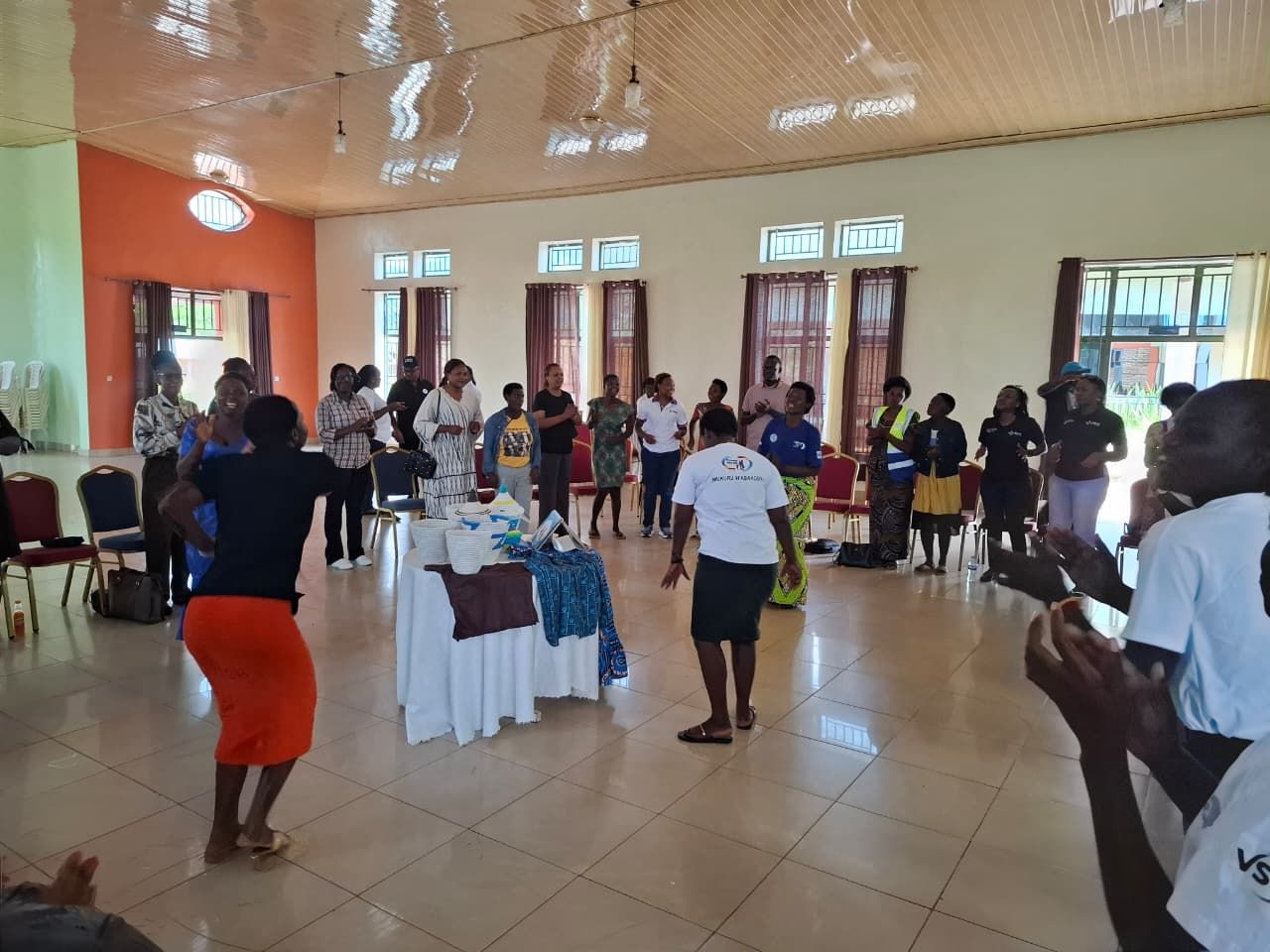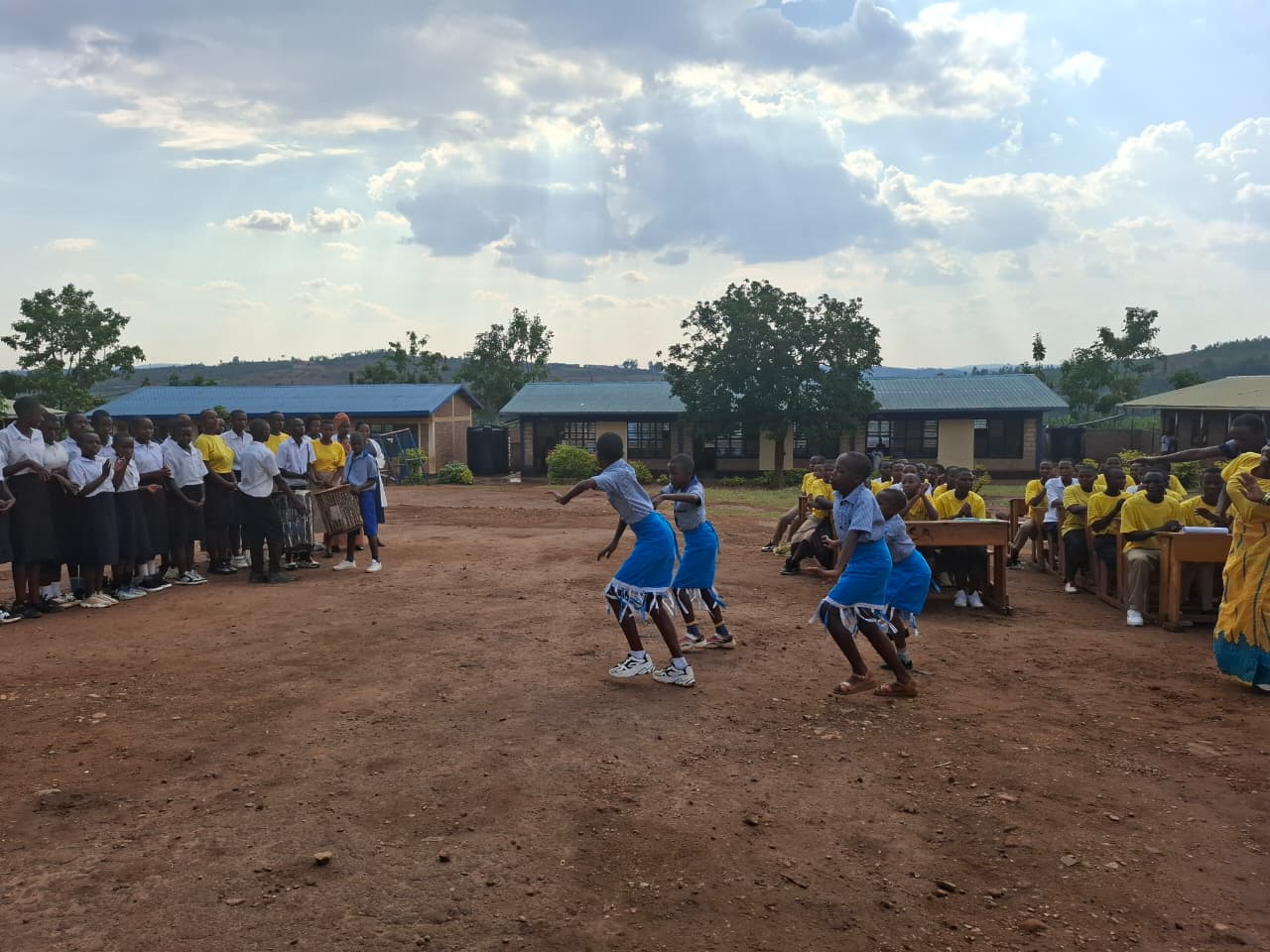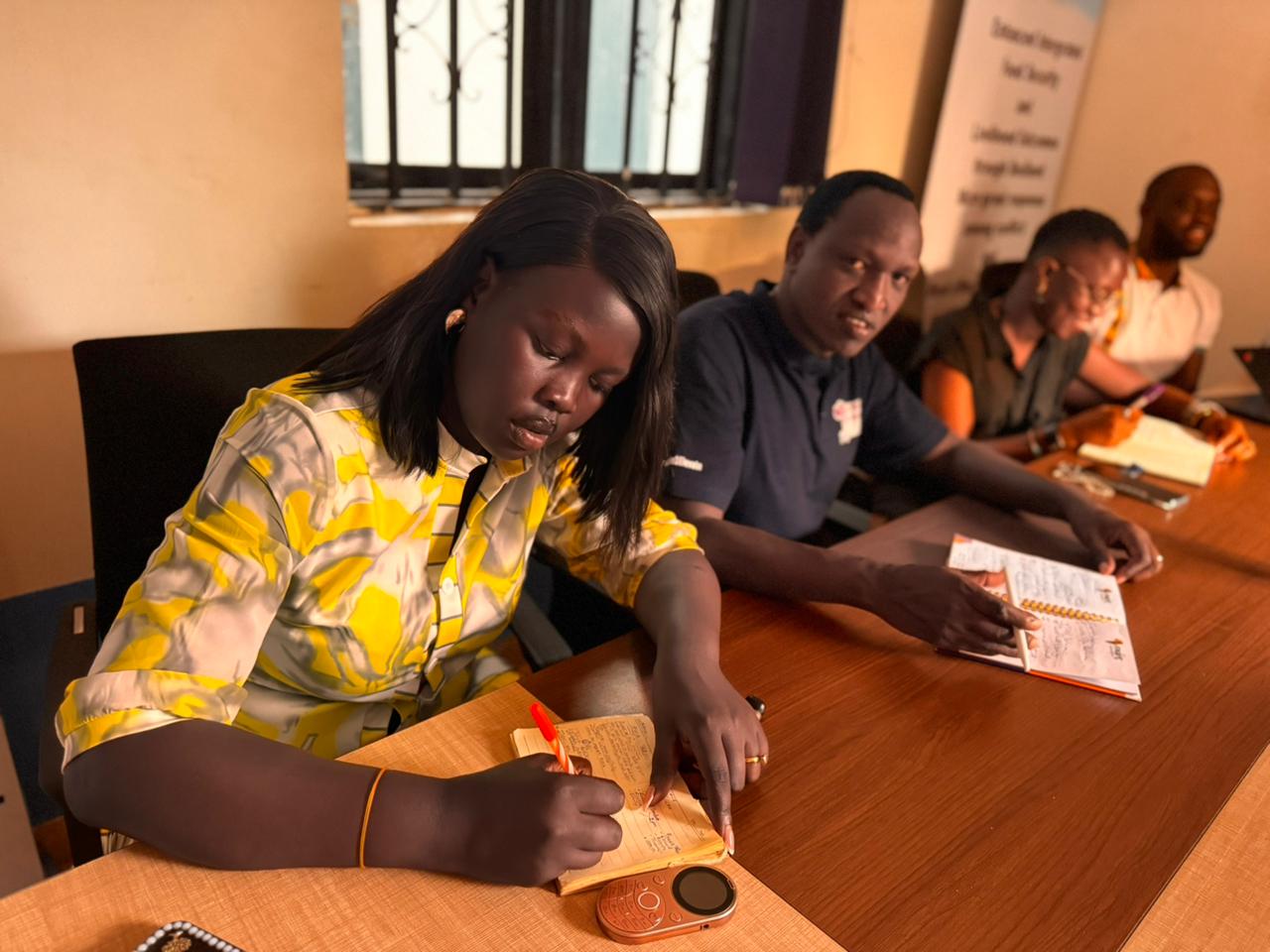RUGARAMA, Eastern Province, Rwanda – The metrics of development can sometimes feel abstract—percentages of improvement, enrollment rates, project cycles. But here, in the dust and sun of the Eastern Province, the impact of a ‘safe space’ is measured in more tangible currency: the steady hum of a sewing machine, the scent of fresh vegetables from a market garden, and the unbroken gaze of a girl who is no longer looking down.
This is the story unfolding in Rugarama, a chapter written not in reports, but in reclaimed lives. A recent two-day field visit by FAWE National Chapter representatives was not a mere monitoring exercise; it was a pilgrimage to witness an alchemy of human spirit, catalyzed by the Community Partner Learn Work Develop.
The intervention is deceptively simple: a safe space. Four walls, a roof. But within that container, a profound transformation has been brewed. This began as a sanctuary for Sexual and Reproductive Health (SRH) education, a place where girls could finally speak the unspeakable. They shared fears, asked forbidden questions, and found, in each other, a collective shoulder to lean on. The silence that once isolated them became a chorus of shared experience.
But the most powerful evolution occurred when this newfound confidence spilled beyond the walls of dialogue and into the soil of the local economy. The same women who once huddled to discuss their health are now pooling resources and ambition. They have ignited a series of Income Generating Activities (IGAs)—small businesses, cooperative farms, tailoring ventures.
This is where the theory of empowerment becomes practice. The ‘safe space’ is no longer just a psychological refuge; it has become an economic engine. The women are not just beneficiaries; they are entrepreneurs. The capital they are building isn’t just financial; it is dignity, woven into the fabric of their families’ lives. They are settling school fees, putting nourishing food on the table, and investing in a future they now have the audacity to design.
The visitors from the FAWE National Chapters did not come to Rugarama to deliver solutions. They came to witness a miracle in progress—one where a space to speak freely has become the foundational stone for a self-sustaining fortress of resilience. The girls of Rugarama are not just speaking out; they are building out, turning their voices into the most valuable asset of all: a self-determined life.
Where Student Scripts Forge a New School Reality
Still in Rugarama, the stage is bare, but the stories it holds are heavy. There is no set, no professional lighting. The only props are the earnest faces of the students from the GS Rugarama Tuseme Club. When they begin their skit, they are not just performing; they are conducting a public autopsy on the silent epidemics of their own hallways.
They act out the anatomy of violence—not the dramatic, cinematic kind, but the slow, corrosive varieties that thrive in silence. Then, they do something even more radical: they stage the cure. They map the support systems, demonstrate the intervention, and script a path back for a peer who has vanished from the classroom rolls. This is not entertainment; it is a participatory democracy of survival, with the entire school as its audience.
Across the region, the name “Tuseme”—”Let Us Speak Out”—is shedding its status as a mere club name and becoming a verb. It describes an active, systemic function within a school’s ecosystem. The clubs have evolved from discussion forums into agile, student-led response units.
Their impact is measured in three distinct layers of change, each more profound than the last. First, the direct rescue mission: bringing learners back through the school gates and ensuring they stay. This is the most visible victory. Second, a quiet revolution in the teacher-student dynamic. The collaboration is no longer about discipline, but about shared custody of a student’s future, making retention a joint project.
The third layer, however, is where the model reveals its true genius: the campaigns spilling beyond the school walls. Students are becoming evangelists in their own communities, tackling issues whose roots are buried deep in the fabric of home and society.
Critically, this is not a temporary project fueled by external passion. The most telling sign of its success is the institutional embrace. Teachers and learners are now architects of their own continuity, building sustainability measures into the very culture of the school. They are not just celebrating the success of a project; they are ensuring the project never ends, transforming a staged performance into an unending, real-life drama of resilience and return.





Leave A Comment